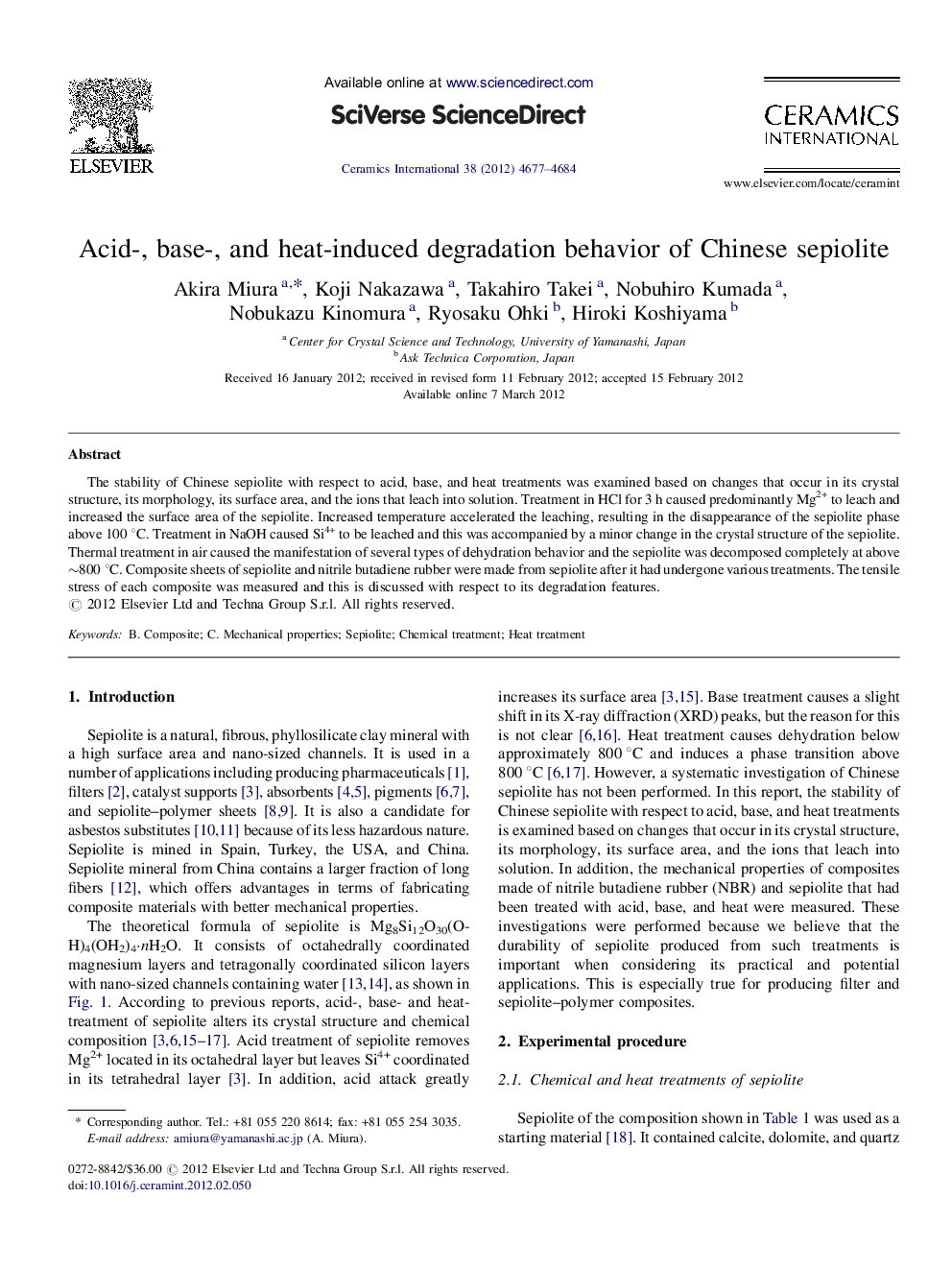| Article ID | Journal | Published Year | Pages | File Type |
|---|---|---|---|---|
| 1463733 | Ceramics International | 2012 | 8 Pages |
The stability of Chinese sepiolite with respect to acid, base, and heat treatments was examined based on changes that occur in its crystal structure, its morphology, its surface area, and the ions that leach into solution. Treatment in HCl for 3 h caused predominantly Mg2+ to leach and increased the surface area of the sepiolite. Increased temperature accelerated the leaching, resulting in the disappearance of the sepiolite phase above 100 °C. Treatment in NaOH caused Si4+ to be leached and this was accompanied by a minor change in the crystal structure of the sepiolite. Thermal treatment in air caused the manifestation of several types of dehydration behavior and the sepiolite was decomposed completely at above ∼800 °C. Composite sheets of sepiolite and nitrile butadiene rubber were made from sepiolite after it had undergone various treatments. The tensile stress of each composite was measured and this is discussed with respect to its degradation features.
